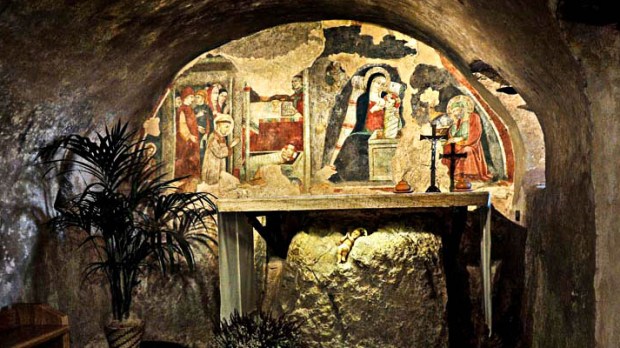The most vivid childhood Christmas memory of many adults is the joy of waking up to see presents under a tree and the agony of not being able to touch those gifts until returning from Mass — even if they had already gone to Mass the day before. That is because there arefour different Masses for Christmas, each featuring different readings.
There are four Christmas Masses are celebrated at different times between Christmas Eve and Christmas Day: Christmas Vigil, celebrated after 4 p.m. on Christmas Eve; Christmas night Mass, celebrated after 10 p.m. on December 24; Mass at dawn; and Christmas Day Mass. Each of these four Masses has different readings and psalms.
The vigil Mass uses the passage from the Gospel of Matthew that goes through the genealogy of Jesus. During Christmas night Mass we hear the the passage from the Gospel of Luke that explains very succinctly what happened the night Jesus was born.
The Mass at dawn, which is not celebrated in all parishes, uses the Gospel of Luke which recounts what the shepherds did after the angels left.
During the Mass on Christmas Day we hear the Gospel of John that tells us “In the beginning was Word” and recounts why God sent Jesus into the world and what happened to those who did and did not accept him.
How did we get to have four different Masses for one feast?
There are a few different explanations as to why there are so many liturgies for this one feast day which — although important — is not actually the central feast for Christians.
As early as 385, Christians in Jerusalem were celebrating the birth of Christ, Epiphany, and the Presentation of the Lord beginning January 6. Part of the celebrations included gathering in Bethlehem for one liturgical celebration and processing by torchlight to Jerusalem. By the time they arrived in Jerusalem it would be close to dawn and they would hold another Mass.
At some point around 385, Egeria, a Christian woman from Rome, is said to have visited Jerusalem and observed this celebration. When she returned to Rome she shared what she had seen.
This is where things get cloudy. Somehow she was able to share what she had seen with influential people including the man who became Pope Sixtus III. He was pope between 432 and 440, had somehow heard her account these celebrations and was inspired to celebrate Mass at midnight on Christmas Eve. He would celebrate in the “grotto of the Nativity” which he had built in the basilica of St. Mary Major to house the relics of the true manger.
Father Michael Kwatera, OSB — a liturgistand the director of liturgy at St. John’s Abbey in Collegeville, Minnesota — offers another explanation in The Visitor, the newspaper of the Diocese of St. Cloud.In the 4th century the only Christmas Mass celebrated in Rome was at 9 a.m. on December 25 at St. Peter’s Basilica.
There was one snag: December 25 was also the Roman feast of the sun. Pope Leo the Great noticed that Romans would bow to the sun before entering the basilica and he was not happy about it. To make sure only Christ was worshiped on Christmas he added a midnight Mass on the evening of December 24. The Mass was celebrated at the altar of the crib in the Nativity chapel of St. Mary Major.
There is less information about the institution of the dawn Mass on Christmas Day. In the mid 6th century the feast days of various martyrs and saints also fell on December 25. One of these was St. Anastasia of Sirmium.Early on Christmas morning the pope would travel to the Roman palace where members of the Byzantine court lived to celebrate a private Mass for the feast day of St. Anastasia. Eventually the feast days that fell on December 25 were either moved or, in some cases, dropped from the church calendar altogether. When that happened, this early morning papal Mass became a Christmas Mass — sometimes referred to as the “Shepherd’s Mass.”
The Mass at dawn is still widely celebrated in some countries. In Latin America and the Philippines it is known as the “Misa de Gallo” or “Rooster’s Mass.”

